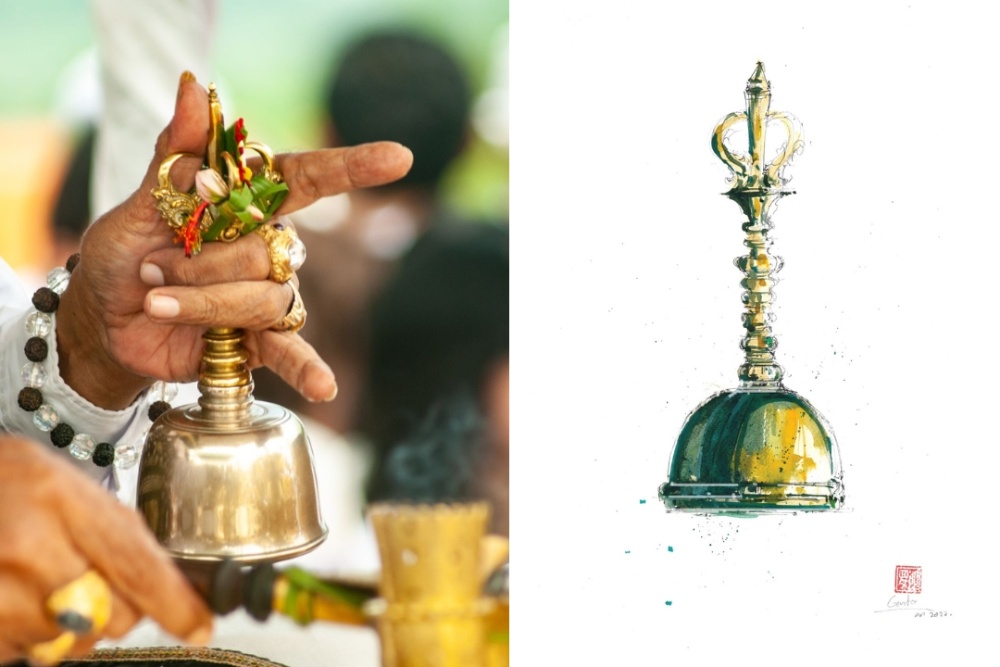
The piercing rings of the genta are heard at every ceremony, big or small. They are a ubiquitous sound in Bali, ringing in temples, roadsides, homes and even over the radio in Bali’s Puja Tri Sandhya, call to prayer. Held in the left hand of the Balinese Hindu priests, and accompanying the chants and mantras, the genta is a vehicle for worship, a tool of communication of prayer and faith.
Genta, a Balinese priest’s bell, is a sacred object, only to be used by those who have completed the mawinten (or pawintenan) ceremonies, a cleansing rite of passage for those entering the religious realm, to become priests and religious scholars. The genta is said to be the weapon of Lord Iswara.
The sound – or rather the spiritual vibration created – connects the three realms and is heard by those that dwell within them: bhuana loka (human realm), bhur loka (lower realm) and swah loka (heavenly realm). Thus, prayers are able to reach their destination. It is said to represent OM, or AUM (Ang Ung Mang – Brahma Wisnu Siwa), and thus the singular God of Sang Hyang Widhi Wasa, connecting those praying to the Almighty.
The shape of the bell itself is important, including a stupa (the bottom bell), a handle with seven rings, a lingga at the top and four hooks. These are all symbolic. The sound of the genta is one of the five sounds necessary in ceremonies, including the sound of the kulkul bell, chanting or song, gamelan, genta and mantras. There are numerous types of genta, decorated with different religious iconography, such as the lembu (bull), Garuda (holy bird-god), used in different occasions. How the genta is used in ceremony also requires specific learning for the priests, with different mudra (hand gestures), motions and sounds relating to specific mantras and prayers.






